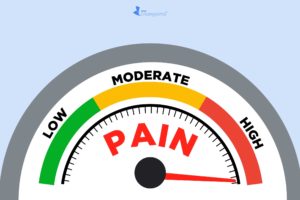What is a Chronic low back pain?
Although commonly used word for being in pain for a long time is ‘Chronic’, I would like to call it ‘Persistent Pain’. Because, the word Chronic seems to have a very negative connotation to it. Also, It is a general belief that if you have ‘Chronic Pain’, you will have to live with pain forever! If you wish to get more knowledge about persistent pain, please visit this link. https://www.betterhealth.vic.gov.au/health/conditionsandtreatments/Living-with-persistent-pain
Case review of chronic low back pain
Let us take an example here of a person who has had low back pain, for many years. They have had an X-ray and an MRI done which shows some minor degenerative changes. There is no major nerve compression. However, there may be some minor disc bulges which their family doctor mentioned is normal for the age. As a result, they were advised to go for physiotherapy, which was done for several weeks with minor relief.
Also, Chiropractic and Massage therapy was then tried, again with some temporary benefits. Through this Chronic Pain, the family doctor then referred them to see an Orthopedic Surgeon who again advised them to continue physiotherapy and painkillers. This person then went to a pain clinic after hearing about this from a friend, and now goes for Pain injections every 6 weeks.
What is a pain assessment
We see many such patients coming to our clinic – PhysioNow on frequent basis. You might question what different are we going to do from what has been previously done. As a result, what I do know is that appropriate assessment and treatment has not been provided else.
A thorough assessment is first needed to guide any treatment process, and in our clinic we look at the spine segment by segment, to identify the restrictions/ pain generating areas. These restrictions may be in the joint, or even along the pathway of the nerves which as associated with these joints.
Planning the right treatment
Manual therapy is then incorporated to treat the areas of restricted mobility that may be in turn forcing many other areas of your low back (including joints and muscles) to produce compensatory pain. Also, there may be some areas which have more mobility than expected (hypermobile) and need to be stabilized by strengthening the muscles which support these structures.
In conclusion
Overall, manual therapy and exercises (stretch and strengthen as needed) are at the heart of the treatment for our person in question preceded by a meticulous lumbar spine segmental and nerve mobility assessment.
Takeaway Message
If this case study sounds similar to your story, come and speak with us. Let us help you get rid of this Persisting (Not Chronic) Low back Pain. You can book your appointment visiting the link below.








Leave a Reply